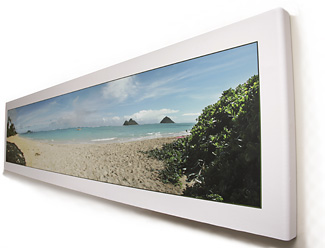https://plus.google.cojm/u/0/100180908095233216305/posts
An artist that inspired me a lot through my recent exquisite corpse project was an artist called Eugenia Loli, this artist creates very proffessional, clean collage pieces containing imagery that juxtaposes to create a dream like reality with its own subjective narrative.
I really enjoy her use of colour and sometimes inappropriate combinations of images, however no matter what the context it is always produced professionally and is always done tastefully.
A second artist who's work inspires me is Ben Heine, this artist combine photography and illustration to create a fun and playful reality in a very unique way.
I find this artist an inspiration because he uses the world around him for to gain ideas and then adds to his surroundings, also a technique like this has endless possibilities.
Own work:
This is a piece I created in response to Eugenia Loli's work, I made this by collaging vintage photographs of my great grandparents to give an authenticated feel, I then further developed these pieces by touching up any rough marks or cutting errors to create a multi-disciplinary series.







